Campaign Resources (403 found)
Myanmar: Open for Business? Corporate Crime and Abuses at Myanmar Copper Mine
 This report focuses on the Monywa copper mine project and highlights forced evictions, substantial environmental and social impacts, and the repression, sometimes brutal, of those who try to protest. It also raises serious questions about opaque corporate dealings and possible infringements of economic sanctions on Myanmar.
This report focuses on the Monywa copper mine project and highlights forced evictions, substantial environmental and social impacts, and the repression, sometimes brutal, of those who try to protest. It also raises serious questions about opaque corporate dealings and possible infringements of economic sanctions on Myanmar.
Reclaiming the ASEAN Community for The People – CSO Statement
1. PREAMBLE
1.1 This ASEAN Civil Society Conference and ASEAN People’s Forum marks the 10th anniversary since the first regional gathering of civil society in Malaysia. We, the civil society in Southeast Asia[1], welcome the commitment of ASEAN in the years since to establish a people-centric ASEAN and a peaceful, prosperous community. With deep regret and concern, the people’s recommendations submitted to ASEAN member states since 2005 have been neither implemented nor adopted in any meaningful way […]
• • •Statement No. (1/2015) On the Inquiry of Riots of 22nd December 2014 at Latpadaungtaung Copper Mine Project in Salingyi Township
1. News was received on the 22nd of December 2014, of riots between the villagers and the security forces resulting in the death of one Daw Khin Win, aged 53 years of Moe-Gyo-Pyin (middle) village, in Sagaing Region, Salingyi township, during Latpadaungtaung Copper Mine Project fencing activities. It also resulted in the injury of 11 police force personnel as well as 11 villagers. Moreover, the Myanmar National Human Rights Commission received complaint letters asking the Commission to investigate into the truth of the matter […]
• • •Who Killed Ja Seng Ing?
On 13 September 2012, Shayam Ja Seng Ing, a 14 year old Kachin girl, was fatally
injured in Sut Ngai Yang village, Hpakant Township, Kachin State. Her father,
Shayam Brang Shawng, and multiple eyewitnesses allege that she was shot and
killed by Myanmar Army soldiers during a period of indiscriminate gunfire. The
Myanmar Army alleges that she was killed by a mine detonated by the Kachin
Independence Army (KIA) […]
‘If they had hope, they would speak’: The Ongoing Use of State-Sponsored Sexual Violence in Burma’s Ethnic Communities
In January 2014, the Women’s League of Burma (WLB) published a report which demonstrated the systematic use of rape by the Burma Army as a strategy to subjugate communities across the country. We documented over a hundred cases of sexual violence in the years since President Thein Sein took office – a number which we believe grossly underestimates the true scale of the problem. Drawing on evidence gathered by our member organisations across Burma, we argued that there are clear links between militarisation, investment and human rights abuses. We also proposed a number of steps to uproot the culture of impunity which surrounds sexual violence, and prevents survivors from obtaining justice. Whilst recent months have seen positive action taken in several areas, the pillars which provide impunity for perpetrators of human rights abuses remain in place. In January, we called for constitutional reform to place the military under civilian control; the establishment of effective judicial and non-judicial mechanisms to investigate human rights abuses, particularly those relating to sexual violence, and; greater participation of women in the peace process dialogue. […]
• • •Legal Memorandum: War Crimes and Crimes Against Humanity in Eastern Myanmar
In January 2011, the Harvard Law School International Human Rights Clinic (“the Clinic”) began to investigate the actions of the Myanmar Army during a military offensive in eastern Myanmar (“the Offensive”) that began in late 2005 and lasted approximately three years. The Clinic sought to determine whether violations of international criminal law occurred during the Offensive, and whether there exist reasonable grounds to assert that individual military officers could be held responsible for those crimes. The Clinic’s investigation focused specifically on the conduct of two military units—Southern Regional Military Command (“Southern Command”) and Light Infantry Division 66 (“LID 66”)—in Thandaung Township, Kayin State. […]
• • •Protection and Security Concerns in South East Burma/ Myanmar
The peace process in Burma/Myanmar1 is at a critical juncture from which it could evolve into a transformative national dialogue or splinter into a divisive charade. While hopes for substantive and inclusive discussion about structural injustice remain, ongoing militarisation and attacks by the national armed forces2 are undermining the confidence of ethnic stakeholders. This report seeks to highlight the protection and security concerns of conflict-affected communities. […]
• • •Afraid to Go Home: Recent Violent Conflict and Human Rights Abuses in Karen State
The following report was prepared by Karen Rivers Watch (KRW), a coalition of six Karen organizations focused on the environment, women, youth, human rights and development issues. More information about KRW is provided on page 14.
This report is based on field interviews with local villagers and leaders of Karen armed groups, as well as media coverage of the recent conflict. It describes events that led to recent armed conflict between the Democratic Karen Benevolent Army (DKBA) and the combined force of the Burmese Army (BA) and Border Guard Force (BGF) in Karen State. Next, the report gives a detailed account of clashes that occurred along the Salween River in Hpa-an and Hpapun (Mutraw) districts. […]
• • •Pro-Business or Pro-Poor?
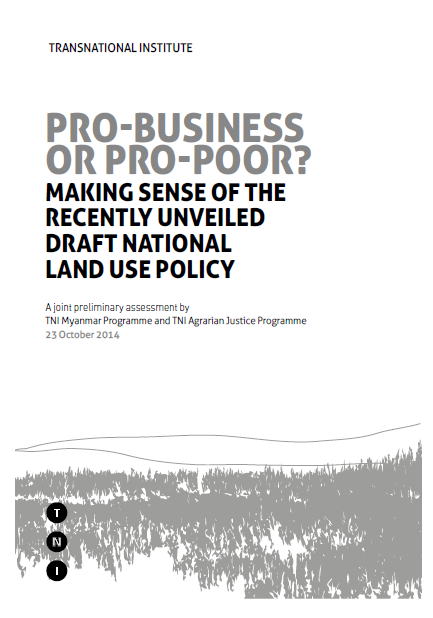 Making Sense of recently unveiled Draft National Land Use Policy
Making Sense of recently unveiled Draft National Land Use Policy
October 18, 2014 saw the official unveiling by the government of the Republic of the Union of Myanmar of its much-awaited draft national land use policy. Once it is finalized, the new policy will guide the establishment of a new overarching framework for the governance of tenure of land and related natural resources like forests for years to come. As such, it is of vital importance.
This preliminary assessment aims to shed light on the key aspects of the draft policy and its potential implications for the country’s majority rural working poor, especially its ethnic minority peoples, although they are not the only ones whose future prospects hinge on how this policy making process will unfold. […]
• • •Voices from the Ground: Concerns over the Dawei Special Economic Zone and Related Projects
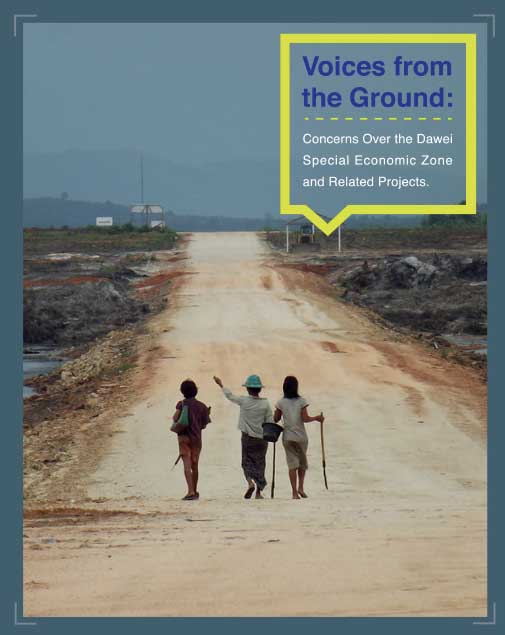 The report “Voices from the Ground: Concerns over the Dawei Special Economic Zone and Related Projects” calls on the National Human Rights Commissions of Thailand and Myanmar to collaborate and carry out a full investigation into all complaints of human rights abuses, relating to land confiscations and forced evictions as a consequence of the Dawei SEZ project activities or operations conducted by companies domiciled in Thailand or Myanmar.
The report “Voices from the Ground: Concerns over the Dawei Special Economic Zone and Related Projects” calls on the National Human Rights Commissions of Thailand and Myanmar to collaborate and carry out a full investigation into all complaints of human rights abuses, relating to land confiscations and forced evictions as a consequence of the Dawei SEZ project activities or operations conducted by companies domiciled in Thailand or Myanmar.


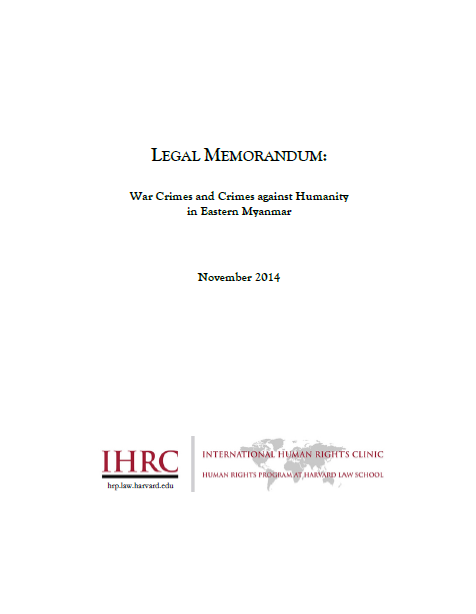
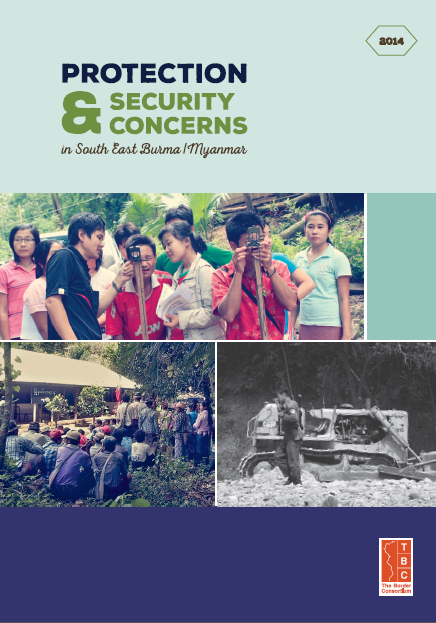
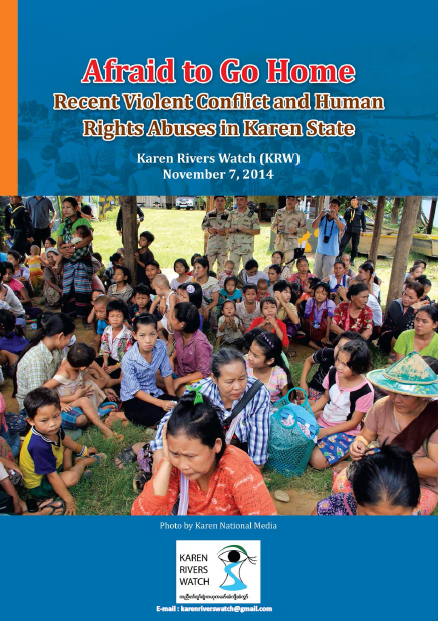
 All posts
All posts